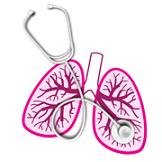Advertisment
Study sheds light on asthma and respiratory viruses

People with asthma often have a hard time dealing with respiratory viruses such as the flu or the common cold, and researchers have struggled to explain why.
In a new study that compared people with and without asthma, the answer is becoming clearer. The researchers found no difference in the key immune response to viruses in the lungs and breathing passages. The work suggests that a fundamental antiviral defence mechanism is intact in asthma. This means that another aspect of the immune system must explain the difficulty people with asthma have when they encounter respiratory viruses.
Among researchers who study asthma, there is debate over why patients with this common breathing disorder might have more trouble dealing with airway viruses than people without asthma. The debate has centered on the role of interferons, which are released by cells lining the airways and are so named because they “interfere” with an invading virus.
“One school of thought says there is a defect in interferon production — that patients with asthma don’t produce enough interferon,” said senior author Michael J. Holtzman, MD, the Selma and Herman Seldin Professor of Medicine. “But we couldn’t find any significant differences between the two groups. In fact, we were struck by how similar they were.”
Holtzman and his colleagues looked at two common airway viruses — influenza A and respiratory syncytial virus (RSV) — and the interferon response they triggered in airway cells sampled from 11 patients with mild to severe asthma and seven control participants without asthma.
Though the study’s sample size was small, the researchers performed an elaborate analysis that took into consideration the downstream events triggered by interferon release.
“Even though we showed both groups made similar amounts of interferon, we recognized that there might be a difference in effectiveness, a difference in how well it triggered downstream events necessary to fighting the virus,” Holtzman said.
To find out whether the same amount of interferon might be less effective in patients with asthma, the investigators compared the genes activated by interferon in both groups of patients.
“The products of these genes are very effective in their antiviral action,” Holtzman said. “But on the other side, the virus has a lot of ways of getting around them. So it’s a battlefield. Who will win out? The interferon-stimulated genes or the viral genes?”
Holtzman and his colleagues showed that even in this downstream activation of genes, asthma patients and those without the condition were remarkably similar. They also measured similar amounts of virus living in the cells at various points of time during the study, indicating that the battles against the viruses progressed similarly in both groups.
“Whatever is causing asthmatics and non-asthmatics to experience differences in how well they recover from these respiratory infections — why patients with asthma are more likely to end up in the hospital, for example — this interferon mechanism is not the deciding factor based on what we’ve seen so far,” Holtzman said.
Given the complexity of the immune system, there are many other possible culprits to investigate. Holtzman and his colleagues are continuing to research these possibilities in similar studies with larger sample sizes and in studies looking at different aspects of the immune system. One likely possibility that the group has proposed is that viruses have a special means to induce inflammatory airway disease, and the susceptibility to this process may be an essential feature of asthma and related lung diseases such as chronic obstructive pulmonary disease.
Patel DA, You Y, Huang G, Byers DE, Kim HJ, Agapov E, Moore ML, Peebles Jr. RS, Castro M, Sumino K, Shifren A, Brody SL, Holtzman MJ. Interferon response and respiratory virus control are preserved in bronchial epithelial cells in asthma. The Journal of Allergy and Clinical Immunology. Sept. 9, 2014.
Contact: Julia Evangelou Strait
straitj@wustl.edu





